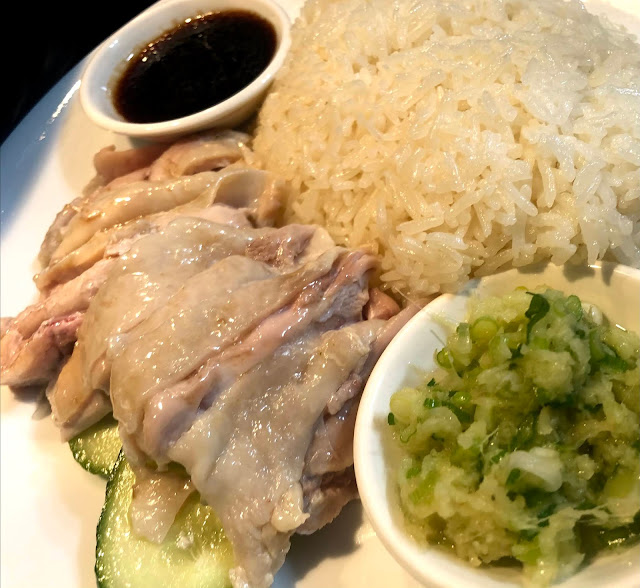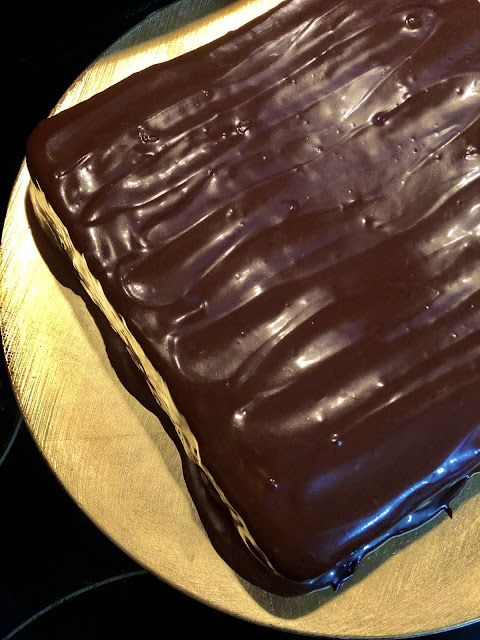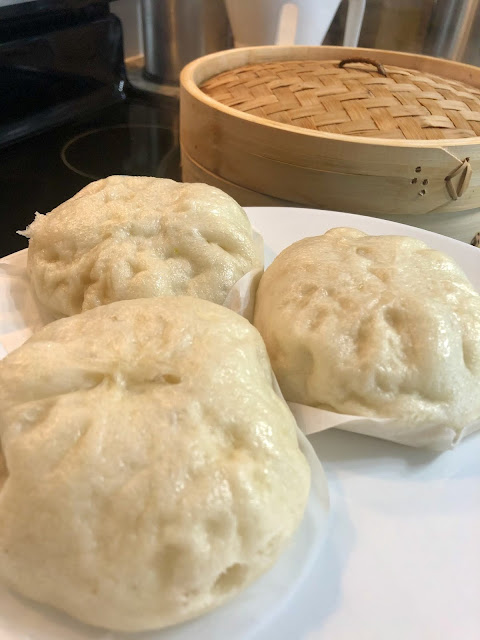Recipe: Succulent Melt-in-your-mouth Pork Chashu
We actually ate this in silence and closed our eyes while we chewed the first bite.

In the early days of this whole pandemic (specifically March), we were scouring TV shows and movies at top speed and at one point we didn't find anything interesting. My uncle suggested to watch "Miso Hungry" (available in Prime). So we watched it we obviously started craving for everything Japanese! It didn't help that we alwaaayssss loved Japanese cuisine as well! So, we searched for recipes we wanted to eat and immediately tried to buy as much Japanese ingredients as we could hoard in our fewer-than-normal grocery runs. Because of all the research we were doing, we started salivating every time we'd run into a recipe with chashu (ramen, yakimeshi, chahan, chashu buns, etc). I'm so extra thankful for our local Asian grocery, BestCo. They were equipped with everything despite the chaos of the times (yes... they had toilet paper, paper towels, disinfectant wipes and spray, face masks, and hand sanitizers when the whole world was running short).
And yes, pork bellies by the slab were available too. 😉 (Imagine hearing a church choir when we approached the meat section of the grocery. We could've sworn we saw a spotlight shining specifically on the pork bellies too.)
Chashu literally means "braised pork" in Japanese. Don't get this confused with the Chinese "char siu pork", that's barbecued pork. Because the pork belly is used in making chashu, this then produces a really soft and melt-in-your mouth product. This can be prepared as a roulade/roll (like a porchetta is prepared) or just in slabs of a bellies quartered or halved. Once cooked, the thinly sliced pork belly is torched (or broiled) to give it that smoky finish and taste. (ARE YOU DROOLING YET?!) This can then be eaten as is like an appetizer or a side while eating your main course, or it can be topped or added to a number of different dishes. The most well-known application would be in ramen (Japanese noodle soup). If you are a pork belly lover (Don't doubt yourself, if you love it, claim it and stop acting like "eeewww calories". Please. Let's be real.), you'll savour each and every bite of these slices. They're savoury, packed with umami, tender, and the balance of fat and meat is just mind-blowing and mind-numbing at the same time.
The secret to really soft and tender (slide-off-the-bone then melt-in-your-mouth) is really time and patience. You cannot rush perfection! It takes time for meats to soften to an almost-heaven tenderness. Braising is a two-step cooking technique where you first sear the meat and then letting it simmer in low heat in a covered pot for a loooonnng time. If you haven't tried braising, well... I'm telling you. It not only satisfies your belly but also your soul. Braising produces some of the most delectable dishes in any cuisine. TRY IT. 😳 (It will also give you bragging rights. Just saying.)
=========================================
Succulent Melt-in-your-mouth Pork Chashu
I sliced a whole pork belly slab into quarters (mainly because my dutch oven wasn't big enough to accommodate the larger whole slab). By doing this, I was able to store the portions I wasn't going to use or eat just yet. Suffice to say, I had 4 portions because I would only bring out 1 slab to slice at a time. But don't get me wrong, you can eat the whole thing at one go.
You'll need a non-stick skillet, tongs, a chopping board, a really sharp knife, a casserole/dutch oven/heavy bottom pot, a wooden spoon, some foil, and a torch (optional, you can also use a broiler).
Ingredients
1.5-2 kg pork belly, skinned
3-4 spring onions, chopped into 2-inch sticks
1-2 knobs of ginger, peeled and sliced
salt for seasoning
1 1/3 cup water
1/3 cup granulated sugar
2/3 cup cooking sake
2/3 cup soy sauce (A deep and good organic soy sauce like Tamari is optimal. But if you have regular soy sauce, it's fine as well. I just find the Tamari has a better flavour, offering so much umami.)
(How easy is this?! All you need is one measuring cup, 1/3 cup all the way!)
Procedure
2. Quarter the whole belly into 4 portions. Using your sharp knife, slice off the skin of the pork belly (not the fat, you want to keep the fat just remove the skin). Salt each side of the pork belly portions.
3. Heat your skillet to medium-high heat. Sear the fat side down first, this will take about 3-4 minutes to brown nicely. Flip and repeat the sear. If you can do even the sides, continue on until all pork portions are done. Set aside on a plate.
4. Heat your casserole/dutch oven heavy bottom to medium. Mix all the wet ingredients together and stir with a spoon. Place the seared portions in the pot (fat side down) and distribute the ginger and spring onions. Bring to a boil and then lower to a medium/low heat.
5. You can leave the lid slightly ajar for the moisture to escape and reduce the braising liquid slowly. Or, you can make a drop lid with the foil. Form the foil into a circular lid that will fit inside the pot, this allows the moisture to escape.
6. This may take about 1 hour to 1 hour and 45 minutes on low heat. You'll know when the sauce has thickened to a dark brown glaze (Do not mistake this burned sauce! You'll smell it so keep an eye on it.) and you can draw a line on the bottom of the pan with your wooden spoon.
7. Gently take the chashu blocks off the pan and let this cool for 5 mins on a chopping board. Slice thinly. If you want, torch or broil the sliced chashu to enhance the smoky flavour.
8. Enjoy!!!! Top this over ramen noodles, eat as is, or serve with Japanese fried rice!
--------------------------------------------------------------
*Because we've been reading so much into Japanese cooking, we learned about the Otoshibuta (the drop lid). One of the great Japanese cooking inventions. These are wooden or bamboo lids that the circumference are smaller than the pot's lid, so it fits inside the pot instead of covering the pot as a normal lid would function. This is just simply genius and with so much benefits to cooking. First off, it holds the ingredients in place. The ingredients cook evenly at low temperatures because the air circulates around them. Even the sauce circulates going over the meats so you don't need to keep flipping and stirring about (and eventually breaking up the ingredients inside the pot). And last, this braises the meats slowly letting the sugars in the dish caramelize evenly.
**You can use the braising liquid to make a super umami-packed chahan! It's sooooo yummy. Chahan is Japanese fried rice. I basically made Japanese sushi rice (yes, not just rice), and stir-fried it with minced garlic, sliced shiitake mushroom, chopped green onions, corn, the braising liquid, drizzled sesame oil and topped with sesame seeds. This rice alone is so good, you can eat it on it's own. This makes a great packed lunch as well!
***Because you can make these into fillings for buns, you can use the bun recipe used in my Siopao Asado Recipe found here. Just don't add the vegetable oil and form into buns with no fillings. This makes a good snack and if you eat about 4, then a good meal 😁.
****Umami. In my opinion, this is just the "level of the gods" taste. Seriously. If you don't know what umami is, it's the "hhhhmmmmmm yuuummmm" belly-rubbing reaction because of the savoury taste that food offers. Other than salty, sweet, bitter, and sour, this taste is mostly associated with broths, stews, or anything cooked with meats really.
#donyaluzee #food #recipe #pork #chashu #porkbelly #umami #sake #soysauce #tamari #sake #ginger #greenonions #springonions #mantou #buns #chahan #broil #torch
**You can use the braising liquid to make a super umami-packed chahan! It's sooooo yummy. Chahan is Japanese fried rice. I basically made Japanese sushi rice (yes, not just rice), and stir-fried it with minced garlic, sliced shiitake mushroom, chopped green onions, corn, the braising liquid, drizzled sesame oil and topped with sesame seeds. This rice alone is so good, you can eat it on it's own. This makes a great packed lunch as well!
***Because you can make these into fillings for buns, you can use the bun recipe used in my Siopao Asado Recipe found here. Just don't add the vegetable oil and form into buns with no fillings. This makes a good snack and if you eat about 4, then a good meal 😁.
****Umami. In my opinion, this is just the "level of the gods" taste. Seriously. If you don't know what umami is, it's the "hhhhmmmmmm yuuummmm" belly-rubbing reaction because of the savoury taste that food offers. Other than salty, sweet, bitter, and sour, this taste is mostly associated with broths, stews, or anything cooked with meats really.
#donyaluzee #food #recipe #pork #chashu #porkbelly #umami #sake #soysauce #tamari #sake #ginger #greenonions #springonions #mantou #buns #chahan #broil #torch























Comments
Post a Comment